Resources
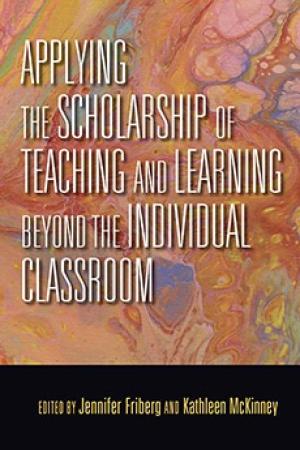
When the Scholarship of Teaching and Learning (SoTL) emerged, it often concentrated on individual faculty practice in one classroom; it is now, however, increasingly common to find work in SoTL focused more broadly. SoTL studies may engage with a cluster of courses, a program, a particular population of students, a pedagogical approach, or a field—all of which are represented in the essays collected here by authors from a diverse array of institutions and nations. This volume features examples of SoTL research conducted in, and applied to, a variety of contexts and disciplines, offering a theoretical framework for an expanded vision of SoTL—one that moves beyond the individual classroom. (From the Publisher)
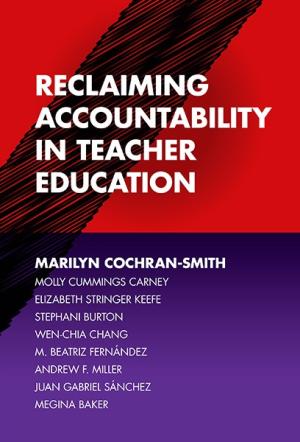
Teacher accountability has been a major strategy for “fixing” education for the last 2 decades. In this book, Cochran-Smith and her research team argue that it is time for teacher educators to reclaim accountability by adopting a new approach that features intelligent professional responsibility, challenges the structures and processes that reproduce inequity, and sustains multi-layered collaboration with diverse communities. The authors analyze and critique major accountability initiatives, including Department of Education regulations, CAEP accreditation procedures, NCTQ teacher preparation reviews, and edTPA, and expose the lack of evidence behind these policies, as well as the negative impact they are having on teacher education. However, the book does not conclude that accountability is the wrong direction for the next generation of teacher education. Instead, the authors offer a clear and achievable vision of accountability for teacher education based on a commitment to equity and democracy. (From the Publisher)
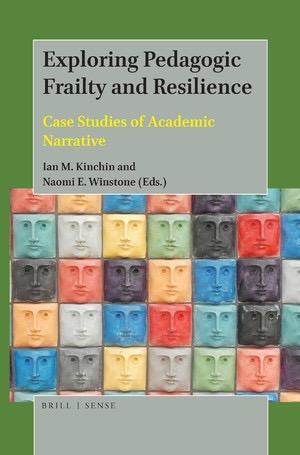
Exploring Pedagogic Frailty and Resilience presents the practical application of the frailty model to demonstrate how it may be used to support the professional development of university teachers. Case studies from colleagues representing a diverse variety of disciplines illustrate how the development of a reflective narrative can be initiated and framed through the use of concept map-mediated interviews. The emerging accounts share a common structure to facilitate comparison across academic disciplines. Chapters are written by academic leaders – colleagues who are recognised as excellent teachers within their disciplines and whose voices will be acknowledged as offering authentic commentary on the current state of university teaching. These commentaries offer a unique resource for other academics who may be tempted to reflect on their teaching in a scholarly manner, or to university managers and academic developers who want to explore the detail that lies beneath broad surveys of teaching quality and investigate the factors that can either support the development of teaching or impede its progress. This collection of narratives drawn from a single institution will resonate with the experiences of teachers in higher education more broadly through areas of common interest and regions of generalisability that can be explored to inform professional development of university teachers in other institutional and national contexts. (From the Publisher)
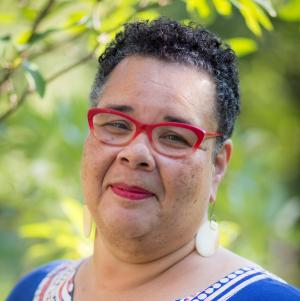
Click Here to Read Part 1 Somewhere along my life’s journey, I learned to play an Australian Aboriginal instrument called the didjeridoo. The didjeridoo is a percussion instrument, said by the Aborigines to be older than the African drum. They use the didjeridoo for meditation, rituals, and rites. A didjeridoo is a long, usually wooden instrument (looks like a rain stick) which is played by blowing into one end. Any didj plays only one note. By manipulating the breath into the didj, the player can shape, prolong, and play-with the one note to create different kinds of sounds. The sounds are often described as basic, primordial, ethereal, and other-worldly. As if the ability to play the didjeridoo is not quirky enough–I can also circular breath. Circular breathing is a technique used by players of wind instruments to produce a continuous tone without interruption. This is accomplished by breathing in through the nose while simultaneously pushing air out though the mouth using air stored in the cheeks. I can circular breath with my dijeridoo. I play my didj for my own meditation. I have, over the years, played two or three times in our seminary chapel services. I have never thought of playing in concert–until March 20, 2019. On March 20th, five-time Grammy award winning, renowned jazz bass player Victor Wooten came to our campus for a day of teaching and to give an evening concert. Wooten, author of the book The Music Lesson: A Spiritual Search for Growth Through Music, is a master teacher. He infused his lessons with wisdom from his mother and stories of how he started to play the bass at age 3, then, by age 5, he and his four older brothers were on tour as the opening band for Curtis Mayfield. Wooten coupled his life stories with his vast knowledge of music theory and his ability to play the bass in innovative ways. He is a creative genius. At some moment during the day, Victor asked me if I played an instrument. I told him that I play the didjeridoo. He said, “Good–you’ll play with me at the concert tonight.” The moment of emphatic invitation was that spontaneous, that casual, and that unexpected. Reflecting now upon that moment, I suspect I routinely do that to students. I hear that they have an ability, a capacity, a talent and I, without hesitation, incorporate that/them into the band that is our classroom. I am accustomed to being the band leader–I was surprised, on this day, to be a member of the band. I had confidence that I could do what Victor asked me to do because I knew I could play my instrument. What I did not anticipate was my own nervousness and stage fright. Near the end of the Wooten concert, I sat in the green room knowing my song was next. I could feel the shallowness of my own breath. I was self-conscious. As I sat, my feet began to cramp. I told myself, “Since I don’t play with my feet, all I have to do is hobble out on stage and sit down, then I can play.” I reached for some water to calm my cramps, but then reasoned that I would need to use the bathroom . . . I was panicking! Inside my head was a voice of confusion and terror. I knew enough to make myself take a few deep breaths and that calmed my fear, if only a bit. As Victor ended a song, I left the green room and went to the wings to wait. The panic rose again–this time my feet were not cramping, but instead I could not focus. I felt like I had lost control of my body. I heard Victor call my name and I stepped out on stage–smiling and terrified. I retrieved my didj which had been pre-set on the other side of the piano and took my seat in the band. Mark Miller was on piano, Elias Aponte-Ortega was on cajón and Wooten was on bass. The music started and I realized I could not hear–I was deaf! I began to play my didj but all I could hear was air and not a note from my didj. I grew more panicked. I closed my eyes. With eyes closed I could hear myself playing, but I was not playing well. Then I heard Victor say “yeah.” I looked up and Victor was looking at me, smiling and bouncing his head to the rhythm of the song. When I saw Victor, I relaxed–just a little bit. I reminded myself to keep looking at the band leader. Victor, with bass in hand, walked over closer to me and kept his eyes on me and kept smiling at me. As I played, I grew stronger and more focused. He turned and walked back to the middle of the stage. As we had planned, Victor and the other instruments brought their part of the song come to an end and I, on didj, extended my part so the last sound was the didj. I played solo for several moments then ended. The crowd erupted with praise, applause and wonder. I stood, raised my hands above my head, and basked in the surreal moment of it all–still terrified! By all reports, no one knew I was terror stricken. I, from the vantage of the audience, had played brilliantly (thank God and thank Wooten!). One week later, I recounted my experience of stage fright and terror to my class who had studied Wooten’s book. My story surprised them. I asked if they had had such experiences. The majority of the students yelled “YES!” then some continued–“here, with you, every week!” One student said she had been in terror since having received her admissions letter (she’s graduating this spring). I told them I knew nervousness and butterflies, but this kind of terror was new to me. They looked at me silently as if to say, “Welcome to our world.” Another student asked if there was a moment that I calmed down. I thought–and remembered the moment I heard Wooten’s voice. His voice brought me back to myself–just a little. Then, when he walked over to me, I was able to restore a bit of my own confidence. I told the students that when I got in touch with the fact that I had a band leader who knew what he was doing, I could believe in myself in that moment. New experiences make for better, more empathetic teaching. My experience of terror and stage fright, as well as my experience of having had the band leader lead me through the moment has made me more aware of the depth of students’ fears and the power of the band leader, in the midst of that fear, to create a beautiful and innovative song. Instilling confidence in students to move to higher accomplishments and supporting that confidence through the presence of an expectant and knowledgeable teacher is my renewed focus. And, if Wooten ever needs a didjeridoo player in another band–I’m available!
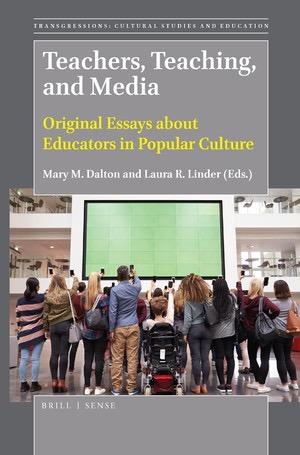
Popular representations of teachers and teaching are easy to take for granted precisely because they are so accessible and pervasive. Our lives are intertextual in the way lived experiences overlap with the stories of others presented to us through mass media. It is this set of connected narratives that we bring into classrooms and into discussions of educational policy. In this day and time—with public education under siege by forces eager to deprofessionalize teaching and transfer public funds to benefit private enterprises—we ignore the dominant discourse about education and the patterns of representation that typify educator characters at our peril. This edited volume offers a fresh take on educator characters in popular culture and also includes important essays about media texts that have not been addressed adequately in the literature previously. The 15 chapters cover diverse forms from literary classics to iconic teacher movies to popular television to rock ‘n’ roll. Topics explored include pedagogy through the lenses of gender, sexuality, race, disability, politics, narrative archetypes, curriculum, teaching strategies, and liberatory praxis. The various perspectives represented in this volume come from scholars and practitioners of education at all levels of schooling. This book is especially timely in an era when public education in the United States is under assault from conservative political forces and undervalued by the general public. (From the Publisher)
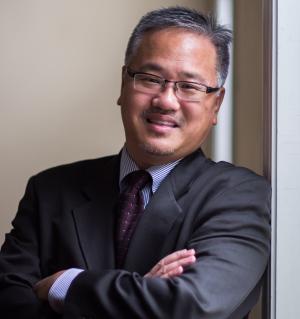
Anyone who has been teaching for a while knows that stress is normal for our vocation. When stress is prolonged over a long period of time, we experience exhaustion. Online instruction can compound the effects of mental, emotional, and even physical exhaustion because of course design that extends the time for planning, preparing, and implementing a course. Managing Your Online Instruction I don’t feel like an expert on self-care, but I have learned some healthy habits to keep teaching online not only manageable, but rewarding. Here is what I have learned so far. 1. Plan ahead and give yourself ample time for course design in online instruction. The largest and most long-term online project I have tackled is, by far, reinvigorating my institution’s distant learners Greek language program. From designing and creating a two-course sequence to implementing and teaching it online, it was a project that lasted a full year. When I started, I had already taught beginning Greek in a traditional F2F on-campus classroom setting for over 10 years. Converting my existing F2F class into a new asynchronous course on the Canvas learning management system (LMS) was a challenge. I had a head start since I had already laid out the course content in my traditional F2F class. This spared me the extra stress and work of trying to plan the course from scratch. Instead, I focused on understanding best online instruction pedagogical practices and implementing new technology. I had to create and produce over 80+ instructional videos, learn how to use the video-conferencing technology for Greek tutoring, and design assignments that made use of Canvas’ full features which included online quizzes. The course design took the entire summer. 3 intense months. It would have taken longer if I had not the experience and past resources of having taught the class beforehand. Whatever you do, plan ahead. You need at least a month to plan out a course and another three to create it on your institution’s LMS. If you don’t give yourself ample time for course design, you will exhaust yourself from creating the course and not have much reserve to teach it. 2. Set aside a no-work day for yourself while implementing the course. Pick one day a week and let students know that on that day, you will be offline not answering any correspondence. We all need a Sabbath space in our weekly schedule to pull away from our work and rest. I have found Saturdays to be the best day off. It affords me time to spend with family and friends. Sundays never worked for me. They tend be days when students scramble to finish their assignments online prior to deadlines on Monday. Know what days work and don’t work for your schedule. Pick a Sabbath day and make it sacred. If you let students know ahead of time, they will honor your day off and expect a response to their queries later. 3. Recharge your motivation for teaching. What makes online instruction a rewarding experience for you? Some of my colleagues enjoy the research and reading that comes with preparing a class. Others, like myself, need a personal connection with students to stay motivated. Whatever the source of inspiration, turn back to it periodically to recharge your enthusiasm for the course. Take the opportunities to stay inspired as they arise. When I was attending an annual denominational event during the Winter break, I learned that a number of my online students would be attending the conference. We met at a local Starbucks simply to connect. We talked about all things Greek and New Testament. But I also learned about their stories and ministries. I heard what they loved about the course and why they wanted to learn the biblical languages. What they shared that day renewed my desire and motivation to teach. Mental exhaustion gave way to rekindled inspiration. I was ready to tackle the rest of semester. 4. Practice the spiritual disciplines faithfully. Here I’m writing to theological educators. We all have our favorite spiritual disciplines: a daily devotional, times of prayer, morning or mid-day offices, or walks for reflection and meditation. I have found walks an important way to reflect on my vocation and pray for students. Whatever your spiritual tradition, observe it faithfully and experience the grace to persevere through even the toughest of semesters.

Students are always already being "formed" in our online classes, whether we mean to have incorporated "formation" into our course designs or not. In this ineluctable process of formation, do the communities of inquiry designed into our online classes align with the norms and values of the communities into which we mean to form our learners? By "formation" in this post, I do not particularly mean "spiritual formation," but I also do not exclude it. If "spiritual formation" involves the practices and conditions for becoming transformed into the community of disciples to Jesus Christ so too is the instructor of (say) Hebrew Bible, Church History, or Theology also forming learners toward the norms and practices of their respective disciplinary communities. Even before that, however, we are already forming learners into a prior community: the communities of inquiry fostered in our course designs. Some readers will already know that from a constructivist perspective learning always involves a creative synthesis, accomplished in the learner, of the experiences and insights she brings to the learning moment, with the new information she encounters there. Crafting within herself this new thing, she is changed in the process of constructing for herself new enduring understandings; that is, she is transformed. Moreover, again from a constructivist standpoint, this creative enterprise of making meaning happens most reliably in collaboration with other learners and in the generation of public projects; that is, the learner is transformed among and via community. Learning, then, is always a matter of transformation in and into community. What, then, will be the norms, practices, and ideology of this learning community, or community of inquiry? To what extent will these be intentional or accidental? How well or poorly will they align with the communities into which we mean our learners to be formed: the community of disciples, or of biblical scholars, or of chaplains, or historians, or theologians? For example, one enduring understanding that I mean for learners to absorb in my Hebrew Bible courses is that biblical studies grounds its claims in publicly available evidence and explicit lines of reasoning, rather than in private revelation or sectarian dogma. Documentary hypotheses for the composition of the Pentateuch are not "alternative dogmas" to an unassailable sectarian claim that Moses authored the first five books of the Bible. An archaeological conclusion that Jericho had no fortifications during any possible time in which one can posit an emergence of Israel in the land is not an "alternative dogma" to an appeal to tradition that Joshua made the walls to tumble down. In this context, with what sort of cognitive dissonance do I set a learner if I refuse to make transparent my rubrics for assessing his exegesis paper? ("It just feels like a B minus.") If my appeal is to the inscrutable and unquestionable authority of my disciplinary expertise and teaching experience, I signal a very different kind of norms for the community of biblical scholars to that which I have been at pains to illustrate in my course design. Do my syllabus and other communication documents direct learners toward institutional policies regarding accommodations for medical issues, disabilities, neurodivergence, and so on? An explicit commitment to reasonable accommodation signals a community norm of inclusion. If I want my learners to imagine the community of disciples as one marked by radical inclusion, then the community of inquiry fostered in my online class is the place to start. Do you find that your institutional policies regarding accommodation are difficult to locate, or hard to understand, or implicitly overridden by instructor whim? It may be time to escalate the matter (to a dean of students or academic dean, to a faculty council, even to a student council). Accommodation in the online class is at least as challenging as in the face-to-face class. How does one accommodate "extra time" for a collaborative assignment that begins and ends over the course of a week? Have I crafted my course documents (syllabus, assignment instructions, feedback) such that they are legible to a "reading" computer program used by a cognitively or visually impaired learner (or my audio-visual resources for the hearing-impaired learner)? It's a tough standard by which to evaluate my online course design, but one that takes seriously the facts that 1) I explicitly describe to learners the ideals of the disciplinary community in which my class seeks to form them, and 2) my course design is forming them into some kind of community of inquiry with its own values . . . intended or not, planned or accidental.
One-page Teaching Tactic that adopts and adapts a technique of classical theological education, secularizing it for an undergraduate context.
One-page Teaching Tactic that taps into students' interest in and knowledge of Facebook to help them read the Bible's four Gospels with fresh eyes.
One-page Teaching Tactic that describes ways that to enhance a class field trip to an academic conference.
Wabash Center Staff Contact
Sarah Farmer, Ph.D
Associate Director
Wabash Center
farmers@wabash.edu